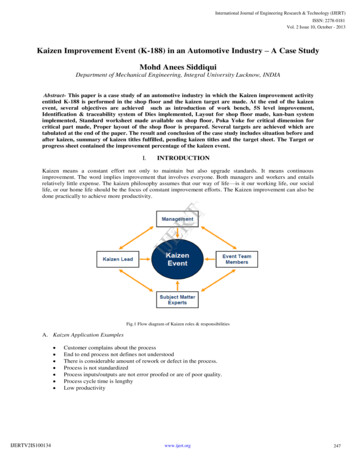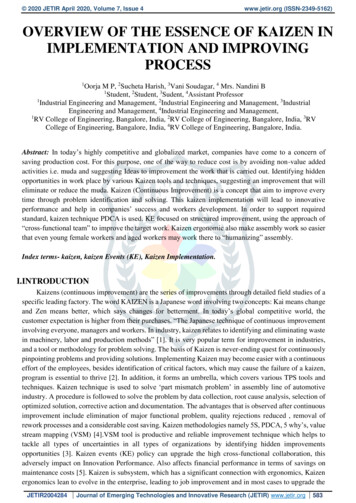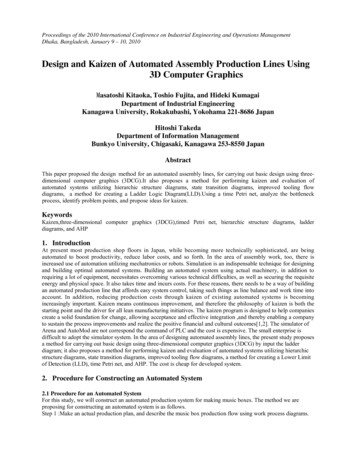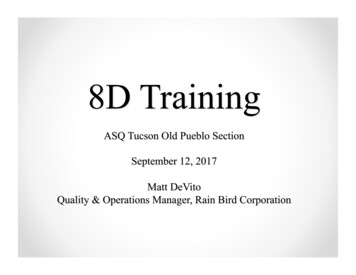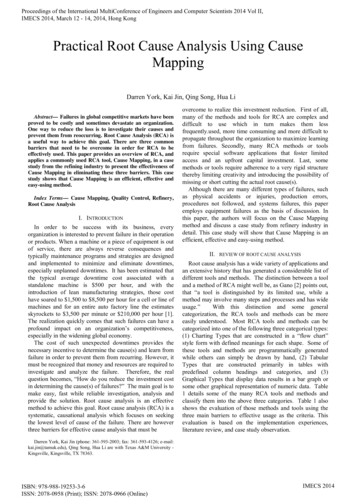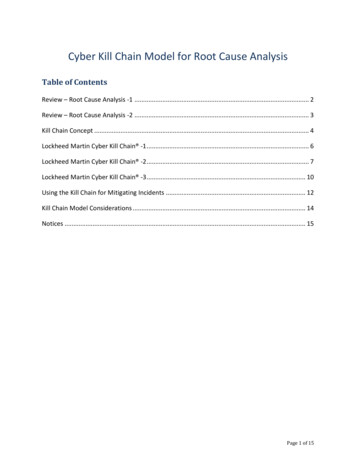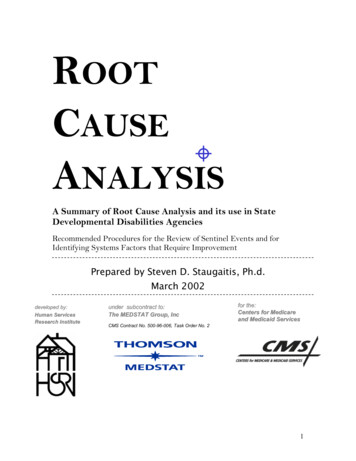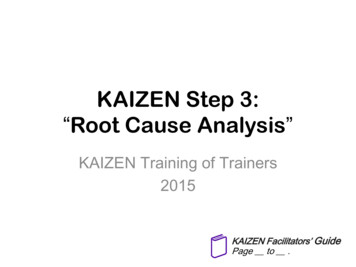
Transcription
KAIZEN Step 3:“Root Cause Analysis”KAIZEN Training of Trainers2015KAIZEN Facilitators’ GuidePage to .
Objectives of the sessionAt the end of the session, trainees are ableto:1. Describe importance of identifying rootcauses of the contributing factor(s)2. Describe how to practice root cause analysisby developing and utilizing Fishbone diagram3. Demonstrate the process of root causeanalysis at their working place1
ndardization7Check effectiveness ofcountermeasureImplementation of countermeasureIdentification of countermeasureRoot Cause AnalysisSituation AnalysisSelection of KAIZEN theme2
KAIZEN Step 2 and Step 31123425Identify thecontributing factorsPrioritize thecontributing factor(s)to be solvedKAIZEN Step 2Find rootcauses of thecontributingfactor(s)KAIZEN Step3 3
Cause-Effect diagram(Fish bone diagram)CauseCauseEffectCauseCause It is developed by Prof. Kaoru Ishikawa It connects “effect” and “cause(s)” systematically with line Clarification of relations between effect and cause(s)4
Two types of Fishbone diagram1. Fishbone diagram for Management– It is aimed for prevention of possible problem not yetoccurred.– It is also aimed to identify factor to be control. It doesnot need to ask why-because question2. Fishbone diagram for Problem Solving– It is aimed to find root causes of problem alreadyoccurred– It is developed based on data and information obtainedfrom Step 2– Find root causes that are affecting the majorcontributing factor(s)5
Steps of root cause analysis (1) Put effect ( the major contributing factor) in the step 2as ”head of fish”; “Why (the contributing factor)happened?” Draw heavy line from left to the effect on thecenter; ”Backbone of fish”Why (the contributingfactor) happened?6
Steps of root cause analysis (2) Determine large category of cause according to yourworking environment– MSHEL group; Management, Software, Hardware,Environment– 4M group; Man, Machine, Material, MethodEnvironmentHumanWhy (the contributingfactor) happened?Hard (machine/equipment)Soft (System and methodology)7
Example of grouping of causes Human: knowledge, skills health conditions,physical conditions etc. Soft: system, methodologies, mechanism etc. Hard: material, equipment, furniture, tools etc. Environment: facility environment (watersupply, electricity, smell, humidity etc.),working environment (work space,accessibility of materials, arrangement etc.)8
Steps of root cause analysis (3) Seek possible causes for the effect (the primarycause) Categorize the primary cause into category Avoid to mention to things in terms of “recourseshortage”EnvironmentHumanWhy (the contributingfactor) happened?Hard (machine/equipment)Soft (System and methodology)9
Steps of root cause analysis (4) Narrow down cause(s) of each primarycause (the secondary cause) Avoid to mention to things in terms of“resource shortage”EnvironmentHumanWhy (the contributingfactor) happened?Hard (machine/equipment)Soft (System and methodology)10
Steps of root cause analysis (5) Find out “root causes” by asking “Why it ishappening?” in enough time (recommended 5times) for each possible causes listed on primarybranch, and branch them into secondary, tertiary.HumanTwoThreeFourFive times!!Why (the contributing factor)happened?Makecircle on it!This isRootcauseOne11
Example of Fishbone diagramEnvironmentHumanWhy (the contributing factor) happened?Hard (machine/equipment)Soft (System and methodology)12
- Continue asking “WhyBecause” in 5 timesOne causemight havemore than 2causes- The categories can be determinedaccording to your situation- The most major contributing factoron the right side13- “Why ( ) happens?”
Remarks on development ofFishbone diagram Effect Major Contributing factor, whichwas identified in Step 2, and Effect is notequals to “KAIZEN Theme”, identified inStep 1 If two contributing factors account for 80%(Pareto rule) in the step 2, it is necessaryto develop two fishbone diagrams14
Cont. When repeat “Why ? – Because ” in 5times, situation of own workplace need tobe thought before searching a cause ofothers While analyzing root causes, it is necessaryto avoid blaming other sections; KAIZEN isfor own15
Cont. Avoiding mentioning “shortage ofresources”; “No money”, “No humanresource”, “No material” etc. Finding root causes should not be donewith your instincts and senses. Yourexperiences, knowledge, and informationshould be used16
If root cause(s) are not identifiedproperly, any countermeasurescould not be come up with The problem willnever be solved!!17
Let us try to developFishbone diagram
Steps of root cause analysis (5) Find out “root causes” by asking “Why it is happening?” in enough time (recommended 5 times) for each possible causes listed on primary branch, and branch them into secondary, tertiary. Why (the contributing factor) happened? Human . One Two Three Fou


